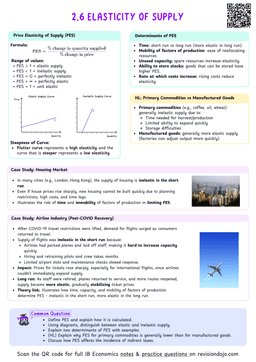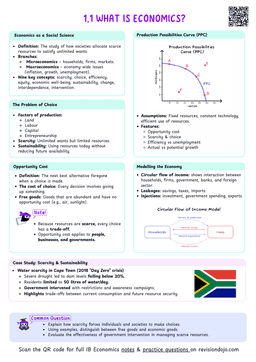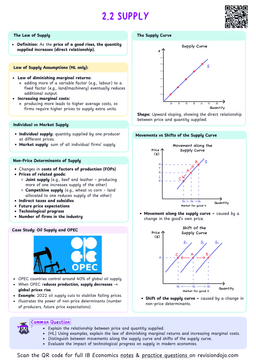In the previous section, we saw the formula for aggregate demand (AD) is:
$$ \text{AD} = C + I + G + (X - M) $$
This section will break down each component.
Consumer spending (C)
Consumption (C) represents all spending made by households on final goods and services during a particular time period.
TipRemember, consumption is driven by disposable income: the money households have available to spend (after paying taxes, outside saving accounts...).
Investment (I)
The investment (I) component of AD is composed of investments:
- By firms on physical capital: money spent on assets used to produce goods and services (factories, machinery, offices...).
- By households and firms on new construction: new housing and other new construction assets.
Investment is more volatile than consumption because it depends heavily on expectations about the future.
Government Spending (G)
Government spending (G) includes all expenditure made by governments on the economy (roads, hospitals, purchasing of factors of production...).
Common MistakeTransfer payments are not included in government spending
Transfer payments are redistributions of income carried out by governments. An example can be unemployment benefits:
- The government collects income from the working force through taxes (leakage).
- The government offers payments to individuals who are unemployed and actively seeking for work (injection).
Transfer payments don't contribute to the national output because they are not an output addition, but a redistribution.
Only money that directly contributes to the output of the economy is included.
Net exports (X-M)
Net exports (X-M) is the market value of all the exports (X) of an economy minus the market value of all its imports (M).
- Exports refer to goods and services produced domestically, and so are included in the calculation of the national output (GDP).
- Imports represent domestic spending on goods and services produced in external economies, and so must be subtracted from expenditure to accurately measure domestic output.
Aggregate Demand (AD) vs Gross Domestic Product (GDP)
It’s easy to confuse aggregate demand (AD) with gross domestic product (GDP), but they are distinct:
- GDP measures the actual value of goods and services produced in an economy.
- Aggregate Demand measures the planned spending on those goods and services.
Which component of aggregate demand do you think is most important for economic growth? Why?


